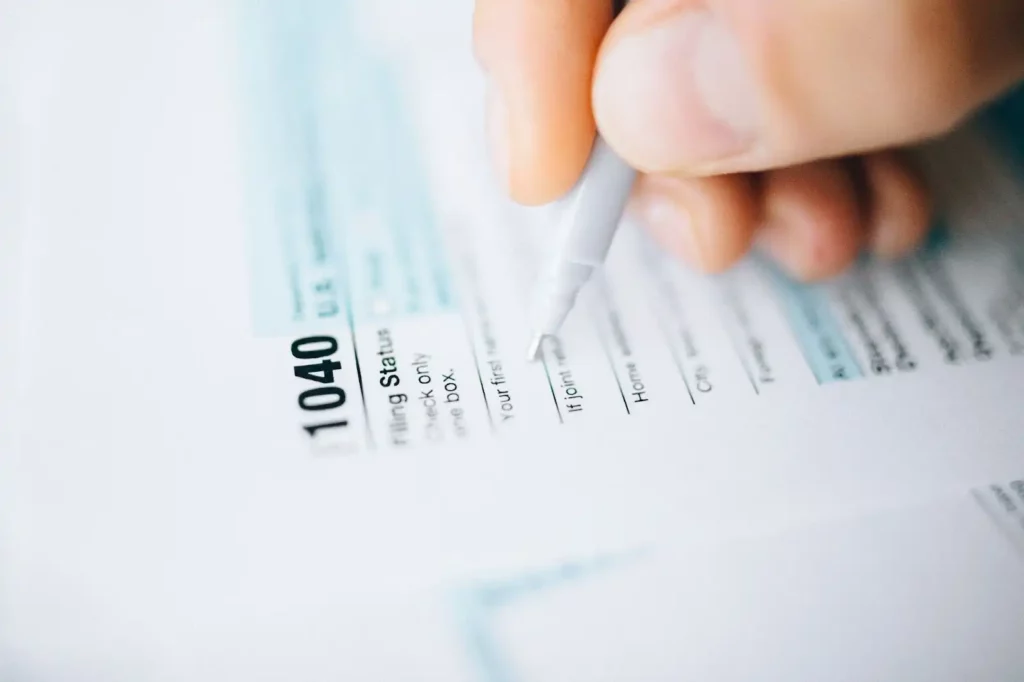If you let it sneak up on you, sales tax can be one of the most difficult and confusing administrative aspects of running an eCommerce business. But once you get the hang of it, handling sales tax is just like any other administrative task. This post will take you through the fundamentals of sales tax to help you get going.
What is Ecommerce Sales Tax?
Sales tax is a small percentage of tax on a sale. Sales tax is collected by a merchant, but the merchant then sends the amount back to a state (and sometimes a local area) where the funds are used to pay for state and local budget items like schools, roads and public safety.

It’s important to note that every state makes its own sales tax laws and rules, so every state will be just a little different. (Take a look at Deleware, for example, where non-resident companies are exempt from paying sales and property taxes.) There are, however, a few universal rules when it comes to the forty-five U.S. states (plus Washington D.C.) that have a sales tax.
State sales tax rates generally vary from 4-8% on the sale, with local areas like cities, counties and special taxing districts being allowed to also charge a sales tax.
As an example, the sales tax rate in the city of Centennial, CO is made up of the combined Colorado state sales tax rate, county and city sales tax rates, and two “special taxing district” sales tax rates:
| Colorado State Rate | 2.9% |
| Arapahoe County | 0.25% |
| City of Centennial | 2.5% |
| Regional Transportation District Tax | 1% |
| Scientific and Cultural Facilities District | 0.1% |
| Total | 6.75% |
Who Needs to Charge Online Sales Tax to Customers?
If you sell taxable products (and most “tangible” products are taxable) then you are required to collect sales tax from your buyers in states where you have “sales tax nexus.” Sales tax nexus is just a fancy legalese way of saying a “significant connection” to the state. The most common factors that create sales tax nexus with a state include:
- Your home state – Even if you just work from your kitchen table, you have “home state” sales tax nexus
- A location – An office, store, warehouse, or other business location creates sales tax nexus
- Personnel – Employees, salespeople, installers and many contractors create sales tax nexus
- Inventory – Storing inventory for sale in a state generally creates sales tax nexus
- A drop shipping relationship – Depending on circumstances, having a distributor ship products directly to your buyer creates sales tax nexus
- A 3rd party affiliate/Click-thru nexus – Many states consider 3rd party affiliates to create sales tax nexus if they send a certain amount of income (usually over $10,000 per year) to your business
- Doing business temporarily (such as at a tradeshow or craft fair) – Some states are more strict than others, but many consider selling products over just two or three days in the state to create sales tax nexus
Register for a Sales Tax Permit
If you have nexus in a state and sell taxable items, the state requires that you register for a sales tax permit before you begin making sales and collecting sales tax from your buyers in that state.
Most states call the document you need a “sales tax license,” but you may also see it called a “sales tax permit” or “seller’s permit.” You register with your state’s department of revenue or other taxing authority. When you register, your state will assign you a filing frequency (usually monthly, quarterly or annually) and sales tax filing due dates. Keep in mind that, if you have sales tax nexus in more than one state, that these filing frequencies and due dates will likely change from state to state!
Don’t skip this step before you start collecting! States consider it unlawful to collect sales tax without a permit.
Collect Sales Tax from Online Buyers
Once you are registered for a sales tax permit, you should set up your shopping carts and marketplaces to collect sales tax from buyers. Fortunately, most eCommerce platforms will collect sales tax for you, though some are more robust than others.
For example, Amazon’s sales tax collection engine is robust and will allow you to collect the correct amount of sales tax in each state, county and city, while eBay’s tax engine will only allow you to collect one sales tax rate within a state.
Read this post for more about how much sales tax to collect from your buyers.
Report How Much Sales Tax You’ve Collected
When your sales tax due date rolls around, it’s time to report how much sales tax you collected from all of your buyers over the taxable period. (Remember, this is generally monthly, quarterly or annually and is assigned by the state.)
Your task now is to figure out how much sales tax you collected from buyers in your nexus states and crunch those numbers until they’re what the state wants to see. This can get tricky because most states don’t want to only know how much sales tax you collected from buyers in the state. They want to know exactly how much you collected from buyers in each county, city and special taxing district so they can allocate the funds correctly. Unfortunately, they make it your job to let them know where your buyers were located.
If you have nexus in a destination-based sales tax state where you are required to collect sales tax based on your buyer’s ship to address then you have a large task ahead of you before filing!
Technology to the rescue! A sales tax automation solution can make this much easier. You can connect to all of the channels on which you sell, and pull in all of your transactions every night. From there, a sales tax automation solution will break down how much you collected in each state, county, city and special taxing district, in the format that the state wants to see on your sales tax return. Once you have that info, it’s time to…
File Your Sales Tax Return
Once you’ve figured out how much sales tax you collected from buyers in each state, county, city and special taxing district, your next step is to file your sales tax return.
You can generally file online (some states even require it.) If you want sales tax completely off your plate, you can also AutoFile your sales tax returns.
There are a couple of important things to keep in mind here:
Always file a return, even if you didn’t collect any sales tax – If you are registered to collect sales tax with a state, always file a return on your due date, even if you have no sales tax to remit. Failing to file can result in consequences from a $50 penalty to the revocation of your sales tax permit.
Don’t leave money on the table – About half of U.S. states realize that collecting, reporting and filing sales tax is painful, and allow online sellers to keep a small percentage of the sales tax they collected. Here’s a list of states that offer these sales tax discounts.
And that’s it – you’ve made it through your first sales tax filing! There’s a lot more to sales tax than I could cover here, so I recommend checking out our Sales Tax 101 for Online Sellers guide.
Have questions or something to say? Start the conversation in the comments!
TaxJar a service built to make sales tax reporting and filing simple for eCommerce sellers. Try a 30-day-free trial of TaxJar today and eliminate sales tax compliance headaches from your life!



